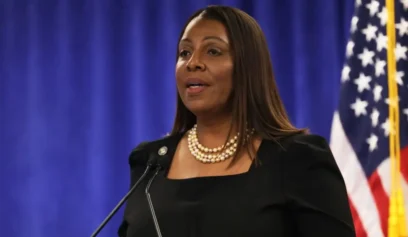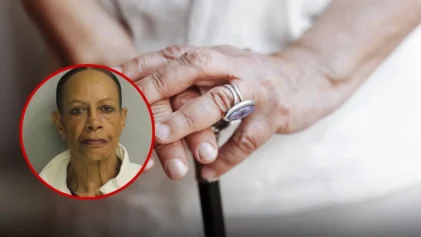After 70 years of reigning as the United Kingdom’s monarch, Queen Elizabeth II will be laid to rest on Sept. 19, but just minutes after her death was announced on Sept. 8, there were calls for her to return some of the royal family jewels from South Africa.
Two pieces of the largest diamond ever discovered are affixed in the British Sovereign’s Royal Scepter and the Imperial State Crown. The Star of Africa, or Cullinan, is a 530-carat fine-quality colorless diamond, the largest cut of its kind in the world. It is mounted in the scepter and worth an estimated $400 million. The Star of Africa II, or Cullinan II, is 317-carat diamond is in the crown. It is unclear how much the second diamond is worth.
Hours before her death, the Twitter account African Archives shared a picture of the queen in the Imperial State Crown referencing the bigger diamond also known as “The Great Star of Africa” as “stolen” from South Africa. The tweet went viral and picked up speed after news of Elizabeth II’s death broke.
“We need what’s ours,” wrote Twitter user, @Lxngelo, who lives in Cape Town, South Africa.
The two gems were cut from a 3,106-carat diamond that was found in Premier Mine in Pretoria, South Africa, in 1905. It is the largest diamond discovered, weighing 1.33 pounds, according to History.com. It was reportedly presented to the reigning British monarch, King Edward VII, Elizabeth II’s great-grandfather, for his birthday in 1907. The government of a former South African province, Transvaal, reportedly gifted the diamond to Edward VII a year after Britain restored its internal self-government.
Many believed that the full diamond, worth $2 billion by some estimates, was stolen from indigenous South Africans. Transvaal was overwhelmingly Boer, South Africans of Dutch, German, or Huguenot descent. The diamond was named after Sir Thomas Cullinan, the owner of the mine, a white man who was born in the British colony Cape Colony.
“She wore this a century later in a time when the descendants of those mineworkers live the legacy of that plunder, still earn a pittance and get slaughtered at Marikana for demanding human standards of working and living,” wrote Mikaela Nhondo Erskog, an African educator and researcher.
Two Boer provinces, including Transvaal, fought for their freedom from Britain from 1899 to 1902. The British government says the gift symbolized the healing relationship between the two countries after the wars.
“The British claim that it was given to them as a symbol of friendship and peace yet it was during colonialism. The British then replaced the name ‘The Great Star of Africa’ with name of Chairman of Mine ‘Thomas Cullinan,’” Africa Archives wrote.
The royal family has used the scepter in every coronation since 1661. The Imperial State Crown was made for King George VI in 1937 and is worn by the monarch when leaving Westminster Abbey after each coronation and on special occasions, including the opening of parliament. Luis Botha, who would become the first prime minister of the Union of South Africa, petitioned in 1907 that the diamond be purchased for £150,000, or nearly $173,000, and presented to the British.
The whole diamond was cut into nine large stones and about 100 smaller ones, according to Britannica. The queen also reportedly owned the next two biggest stones in her brooch, known as “Granny Chips.”
During a 1995 visit to South Africa, Black township leaders called on Elizabeth II to return the Great Star of Africa. The Azanian People’s Organization claimed the diamond was “stolen from the treasures of the Azanian (African) soil.”
“She must be reminded that the diamond belongs to the Black people of this country, and to them alone,” said Azapo spokesperson Zithulele Nxawe.
Buckingham Palace replied with a reminder that the diamond was a “gift.”
Although, the U.K. and some parts of the Commonwealth have declared a period of mourning leading up to Elizabeth II’s funeral, many said they could not feel sorrow for the queen’s death in light of her indulgence in the plethora of wealth the royal family accumulated from colonization and never acknowledging the atrocities behind them. Some South Africans are urging King Charles III, Elizabeth II’s successor, to return the jewels.
“We do not mourn the death of Elizabeth, because to us her death is a reminder of a very tragic period in this country and Africa’s history. Britain, under the leadership of the royal family, took over control of this territory that would become South Africa in 1795 from Batavian control, and took permanent control of the territory in 1806,” said Economic Freedom Fighters, a pan-Africanist political party in South Africa, in a statement.
“From that moment onwards, native people of this land have never known peace, nor have they ever enjoyed the fruits of the riches of this land, riches which were and still are utilized for the enrichment of the British royal family and those who look like them.”


